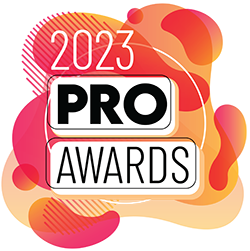Relevancy, Loyalty’s Third R, Key To Future Success

Loyalty marketers are rarely accused of being slow off the mark, and the rate at which they have innately grasped two of the three Rs of loyalty marketing – reward, recognition, relevance –supports this.
Take rewards. Marketers are long accustomed to giving tangible thanks – airline tickets, extra groceries and so forth – to their customers who change their behavior and offer insights into what they value. And recognition has been offered in the form of special access to events or information, or upgrades when inventory allows.
But consumers are inundated with messages, Bryan Pearson, president of LoyaltyOne told an audience at the Colloquy Loyalty Summit. The sheer volume of information aimed at them has grown as communications channels have expanded to encompass social media and mobile communication.
The key to cutting through the clutter – and what will separate the truly genius loyalty marketers from the merely smart – is creating engagement by demonstrating they know who they are and what they care about. In short, by being relevant.
This is easier said than done. Pearson quoted consumer research Colloquy and loyalty agency Direct Antidote conducted in 2009, which found that only 32% of U.S. consumers rated reward program communications 8 or higher on a 1-to-10 scale. Put another way, 68% of these communications received low scores from consumers – and these messages are from organizations that are the best in the business.
The individual paths to relevance will vary from marketer to marketer, but Pearson offered three key consumer motivators – wellness, sustainability and the desire to have a meaningful existence.
For marketers, this means using loyalty programs to urge customers to take socially responsible actions which benefit the planet, their communities and businesses will prove effective. And these consumer priorities mean that loyalty efforts within the government, healthcare and non-profit sectors will be especially powerful.
LoyaltyOne, Pearson’s company, is practicing what he preaches. The company is using its Air Miles Reward Program – a Canadian coalition loyalty scheme – to urge Canadians to make greener lifestyle choices. It now rewards consumers who take mass transit, reduce their electricity use and generate less garbage.
According to Pearson, governments have embraced this effort because it enables them to spread their “go green” message through Air Miles communications collateral. And unlike the cash rebate programs run by the government, the rewards are coordinated by Air Miles – which also bears the administrative costs.
The program’s biggest win so far has been a partnership it inked this past spring with the Ontario Power Authority (OPA). The goal of the program was to draw attention to the OPA’s “2010 Power Pledge”, under which residents of Ontario who sign an online agreement to conserve energy earn 20 reward miles, and can direct the OPA to donate an additional 10 miles to one of a number of charities.
By piggybacking onto Air Miles, in six weeks the OPA was able to surpass the results it had generated during the entire previous year. By the time the program ended, it had generated seven times the previous response – at a third of the cost.
Granted, the barrier to participate – making a pledge – is relatively low. But follow-up research showed that between 25 and 30 percent of the enrollees went on to research how they could reduce their energy footprint.






























